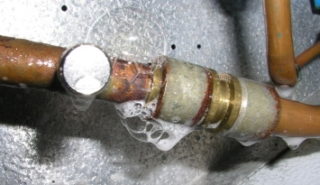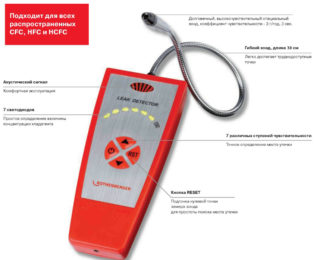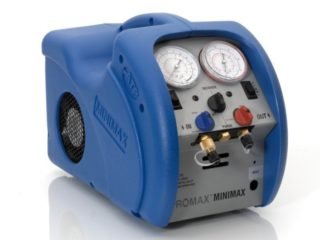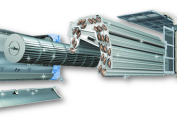Most calls to service centers are related to the leakage and refueling of air conditioners with freon. For this, special equipment is used. Before refueling, tightness is checked and leak points are detected. After eliminating them, you can add refrigerant.
If you do not refuel the air conditioner in time, you will subsequently have to completely change the coolant, which is not cheap. It is possible that together with freon it will be necessary to replace some parts of the split system.
Freon leak detection
 Signs of leaking freon from the air conditioner:
Signs of leaking freon from the air conditioner:
- ice or frost builds up on the fittings of the outdoor module;
- the air conditioner does not cool the air well.
If these signs are detected, you must immediately turn off the air conditioner and call the masters.
To eliminate the malfunction, first you need to find the cause of the leak. It could be:
- low-quality weld in the place of soldering copper tubes;
- poor installation - while increased vibration violates the integrity of the system;
- cracks in pipes due to poor copper quality.
Typically, freon evaporates at the points of attachment of the tubes due to improper flaring or minting. Constant vibration contributes to the loosening of the mounts. To find the cause of the leakage of freon from the air conditioner, special devices are used - leak detectors, which are electronic, halide, ultrasonic.
Other ways to find a leak:
- Using a solution with a detergent.
- Visual method - by the presence of oil stains on the tubes.
- UV dye, adding it to the system.
- Pumping high pressure.
If it is possible to remove the tube system, leakage is determined by conventional immersion in water.
Even perfectly assembled pipelines allow 6 to 8 percent freon per year to pass through. This phenomenon is called normalized leakage. Therefore, once every two years it is necessary to refuel the air conditioner.
Learn more about leak detection methods.
The easiest way is to remove the pipes to be tested, fill with dry nitrogen, seal and immerse in water. At the exit of nitrogen, bubbles will appear. If the damage area is large, it is recommended to replace the pipe. With a small crack, it is sealed using welded equipment.
Soap solution
The effect of the soap solution will be in the case when the place of leakage on the existing oil stains is approximately known. Solutions are sold as sprays and applied to the pipe. After determining the problem place, the substance is washed off the pipe, since chemical additives can penetrate into the system and cause a change in the composition of the coolant.
When dry nitrogen is added to the system, it is easier to locate the refrigerant leak from the air conditioner. The substance makes a hissing sound when exiting the pipe.
Leak detectors
If the type of refrigerant in the system is chlorine-containing, halide equipment is used. Principle of operation: when refrigerant vapor is released, a burner with a flame on the device changes color from blue to green. A halide device helps to find a leak in a small air conditioner - up to 150 ml per year. It has its drawbacks - when working, it is necessary to follow the rules of fire safety, work is carried out in a ventilated room, as harmful substances are released.
There is an electronic analogue of the device, more accurate, but each type of freon has its own model, so the master has several devices designed for the most common types of refrigerants. A sensitive device determines the smallest loss of freon - it searches for leaks up to 5 g per year. After finding the place, check with soapy water. Of the disadvantages:
- the device is expensive;
- sensors periodically change, as they are oxidized and show inaccurate data;
- in windy weather it is impossible to determine the leak - the vapor is carried away by the wind and the sensor does not respond to them.
A new device has appeared in the arsenal of special equipment for service workers - an ultrasonic leak detector. Even the smallest freon leak from the air conditioner is accompanied by sound. The device picks it up and enhances it so that the master can find the problem spot. It is important to exclude other extraneous sounds when working with equipment.
Pressure test
It is applied to long highways. Freon or dry nitrogen is injected into the system, after a while it is checked by a manometer - if the pressure drops, then there is a leak. Next, leak detectors are used.
UV dye
The technique is simple, but it takes time for the dye injected into the system to stand out on the surface where it is fixed with an ultraviolet lamp. To do this, wear special glasses. The method is used in automotive air conditioners.
Consequences of a leak of freon from the air conditioner
Together with freon, oil leaves the system, which forms a film on the surfaces of the compressor parts. Without a film, the assembly jams and the equipment stops.
Other parts are subject to increased friction, as a result of which the service life is reduced.
The lack of freon is replaced by moisture entering through damaged pipes. This leads to the formation of acidic compounds. The compressor windings burn out. Air also enters the circuit and changes the chemical composition of the remaining refrigerant, as a result of which it is no longer able to perform its functions.
Replacing freon in an air conditioner
If replacing freon in a car’s air conditioner is not difficult and is carried out by the owner independently, then a similar procedure in domestic climate equipment requires special skills. Freon replacement in an air conditioner is resorted to in very rare cases, usually you only need to refuel the compressor. It is impossible to change one type of refrigerant for another in household air conditioners: each model is designed for a certain variety and will not work for another.
To drain freon from the air conditioner, professionals use a special portable device of small size. Most of these devices work with any type of refrigerant.
With the help of the station, it is possible to drain freon from the dismantled equipment, which must be disposed of or reused. During the discharge, freon is cleaned. All integrated parts of the equipment are protected during the drain.
On average, a device can drain 260 grams of gas, or 1.85 kilograms of liquid per minute. Powered by a conventional electrical outlet.





